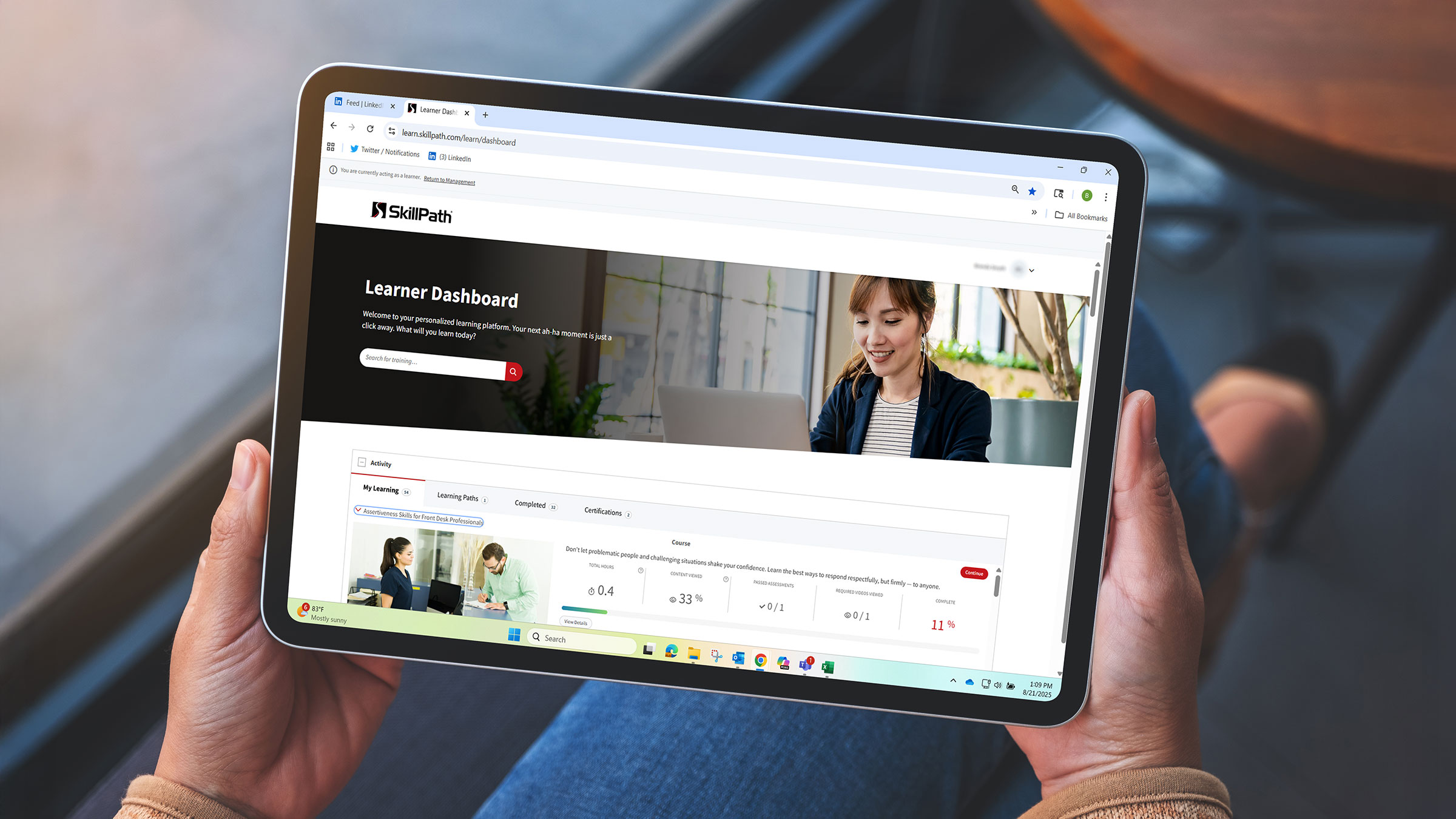Aug 27, 2025
Learning in the Flow of Work: Making Continuous Learning Convenient for Employees
Brenda Smyth, Supervisor of Content Creation
Despite our best efforts to upskill work teams, it often goes something like this:
An engineering firm schedules a series of targeted team training sessions in its push to cut miscommunication and strengthen workflows.
On the morning of the first event, just hours before it starts, one of the engineers gets an urgent client request. The client is preparing for a high-stakes demonstration the following day, and there's a problem with a prototype component.
Faced with the urgency, the engineer notifies the team, skips the session, and responds to the client. The training goes on as planned without this team member.
Learning in the flow of work is tricky for many professions and organizations. Time is the biggest obstacle when it comes to employee development – driving the need for convenient and flexible training options.
Time constraints don't lessen the need for workforce development
According to Gallup, employees, managers, and HR all identify time as a top barrier to learning and development.
The same study also recognizes that “organizations could realize an 18% increase in profit and a 14% increase in productivity by doubling the proportion of employees who feel that they have opportunities at work to learn and grow.”
The World Economic Forum emphasizes the urgency of upskilling and reskilling – with the right mix of technical and human skills – to prepare for the economy of tomorrow.
Driven by constant disruption – from economic instability to technological advancements to evolving customer expectations – organizations and professionals alike have embraced continuous learning as a strategic business imperative. We all know that our current skills have a limited shelf-life.
And for decades, corporate learning centered on scheduled workshops. These pauses in work are invaluable, offering the hands-on opportunities to explore topics through facilitator-guided visual and verbal applications and exercises (pillars of adult learning theory)
But, as illustrated in the earlier example, event-focused training formats can be inconvenient at times. And, as stand-alone, day-long events, they neglect another learning theory basic: spaced repetition as a tool to maximize learning retention. Various studies have shown that spaced learning improves knowledge and retention.
Meeting training flexibility needs
“Employees want a seamless development experience,” according to a McKinsey learning perspective report. To achieve this, learning and development must be woven in. The work, the feedback, and the influx of new information should work together to stretch employees – building new skills and encouraging them to try them out in the trenches.
Increasingly, employees also expect flexibility – not just in where and how they work, but also in how they learn.
Learning platforms and on-demand learning content are L&D tools that offer employees access to just-in-time learning, giving individuals access to self-paced training sessions anytime, anywhere, whether it’s a 4-minute video during a lunch break or a quick refresher before a meeting. This flexibility is especially vital in hybrid and remote work environments.
Cutting training costs and building scalability
Traditional training methods with skilled facilitators are vital for many topics – ensuring learner engagement and knowledge transfer. Learners see, hear, discuss and practice new concepts. But meeting time constraints, flexibility needs, and learning retention goals using only this method is logistically complex and can be costly.
On-demand learning, particularly through digital platforms, significantly reduces expenses related to travel, venues, and materials. It also enhances productivity by allowing employees to learn at the point of need – applying new skills immediately. It’s flexible and it offers opportunities for spaced repetition.
Scalability is another major advantage. Whether training ten employees or ten thousand, organizations can deliver consistent, high-quality content across locations and departments, ensuring everyone receives their prescribed learning experiences – when they have time in their schedules.
Learning in the flow of work is more than a trend – it’s a strategic necessity. It empowers individuals to take charge of their development while enabling organizations to build a skilled, agile, and engaged workforce. As the demand for continuous learning grows, investing in flexible, accessible, and scalable learning will be key to thriving in the future of work.
Talk to a SkillPath learning consultant about our tailored group training, learning platform, or content licensing options.
Brenda Smyth
Supervisor of Content Creation
Brenda Smyth is supervisor of content creation at SkillPath. Drawing from 20-plus years of business and management experience, her writings have appeared on Forbes.com, Entrepreneur.com and Training Industry Magazine.
Latest Articles
Article Topics
